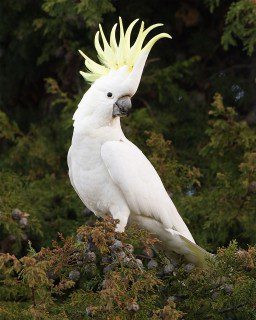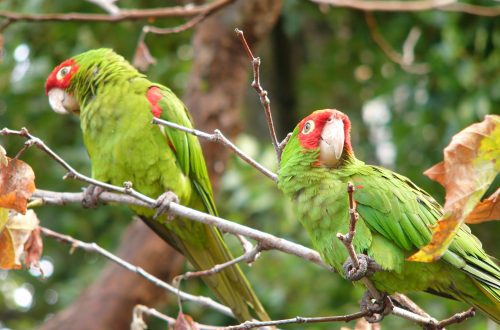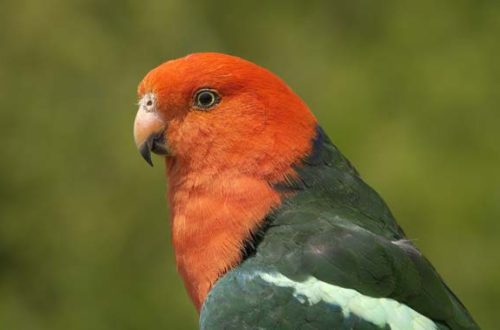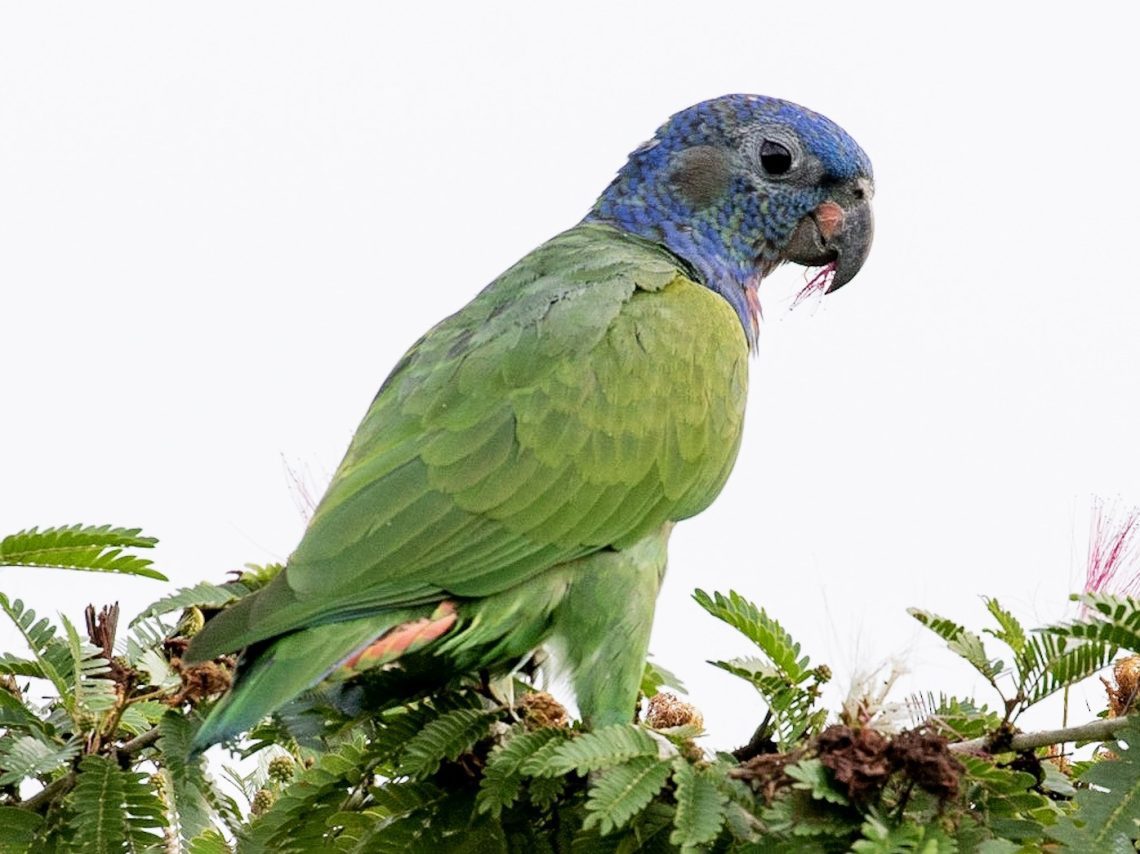
Blue-headed red-tailed parrot
Contents
- Blue-headed Red-tailed Parrot (Pionus menstruus)
- Appearance of the blue-headed red-tailed parrot
- The habitat of the blue-headed red-tailed parrot and life in nature
- Reproduction of the blue-headed red-tailed parrot
- Maintenance and care of the blue-headed red-tailed parrot
- Feeding the blue-headed red-tailed parrot
- Breeding blue-headed red-tailed parrots
Blue-headed Red-tailed Parrot (Pionus menstruus)
Order | Parrots |
family | Parrots |
Race | Peonuses |
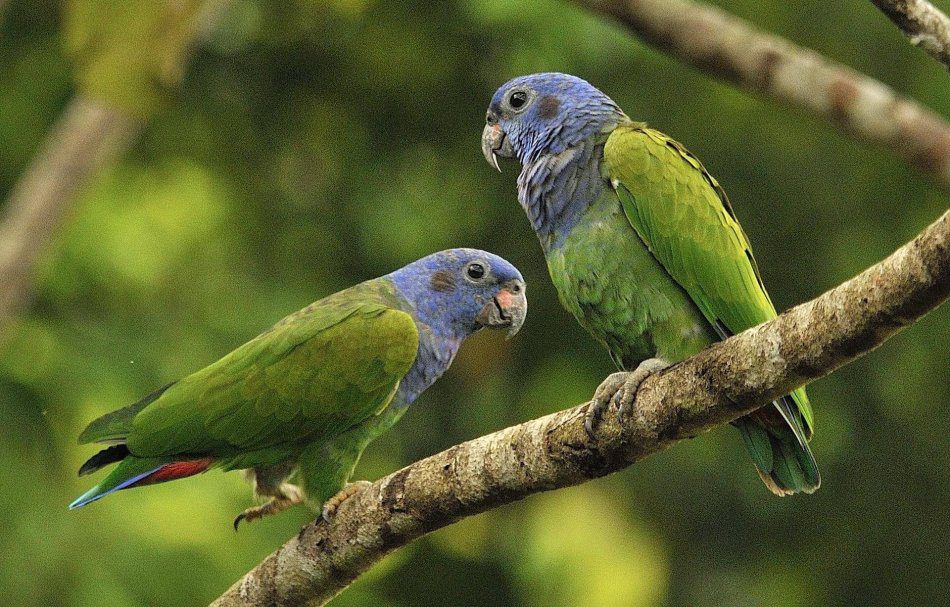
In the photo: a blue-headed red-tailed parrot. Photo: google.by
Appearance of the blue-headed red-tailed parrot
Blue-headed red-tailed parrot – is сa medium-sized short-tailed parrot with an average body length of about 28 cm and a weight of up to 295 g. Individuals of both sexes are colored the same. The main body color of the blue-headed red-tailed parrot is green. The wings are grassy green, the belly is olive green. The head and chest are bright blue. There are several red feathers on the neck. There is a gray-blue spot in the ear area. The undertail is red-brown. The margins of the flight and tail feathers are blue. The periorbital ring is naked, gray in color. The eyes are dark brown. The base of the beak is reddish, the main color of the beak is black. Paws are grey.
3 subspecies are known, differing in color elements and habitat.
The life expectancy of a blue-headed red-tailed parrot with proper care is 30-45 years.
The habitat of the blue-headed red-tailed parrot and life in nature
The species lives in Brazil, Bolivia, Paraguay, as well as in Costa Rica and sharp Trinidad. In some areas of eastern Brazil, this species has been severely affected by deforestation and illegal trade. Within 20 years, the species will lose 20% of its habitat due to deforestation in the Amazon. In this regard, the population of this species is expected to decline by more than 23% within 3 generations.
They live at an altitude of about 1100 meters above sea level in lowland tropical forests, including rain deciduous forests and savannahs. Also found in the subtropics, open forests, cultivated land, plantations.
The diet of the blue-headed red-tailed parrot includes various types of seeds, fruits and flowers. Plantations prefer corn. They usually feed high in the trees. Outside of the breeding season, they are quite noisy and social.
Reproduction of the blue-headed red-tailed parrot
The nesting period of the blue-headed red-tailed parrot in Panama is February-April, February-March in Colombia and Trinidad, February-May in Ecuador. They nest in tree cavities, often occupying old nests of other species. Usually there are 3-4 eggs in a clutch. The female incubates the clutch for 26 days.
The chicks leave the nest at about 10 weeks old. Juveniles stay with their parents for some time.
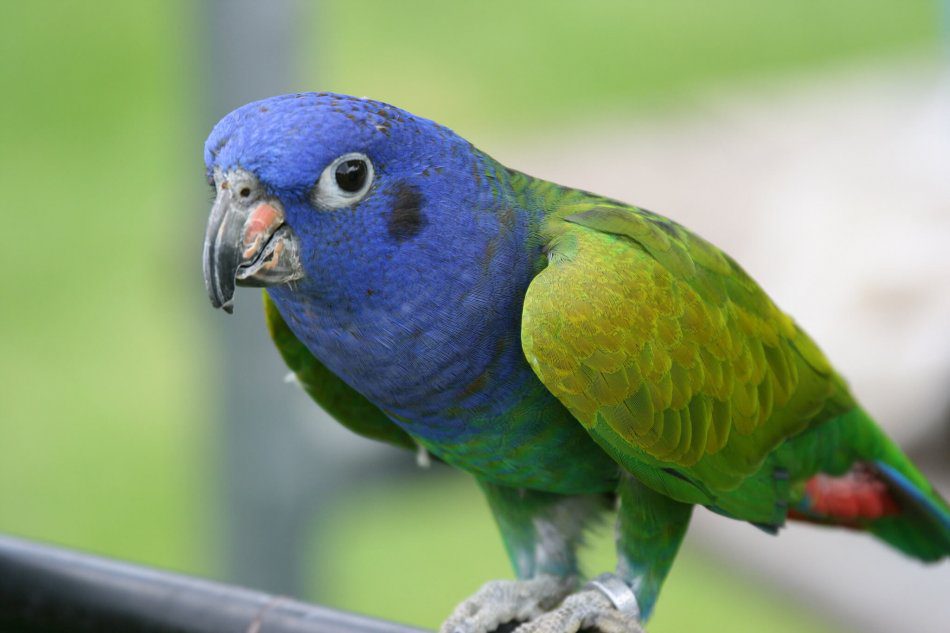
In the photo: a blue-headed red-tailed parrot. Photo: flickr.com
Maintenance and care of the blue-headed red-tailed parrot
Unfortunately, this species is not often found for sale. However, these parrots look quite impressive. Remember that such birds live quite a long time. The only downside is that this species is not the best speech imitator, so you should not expect too much from it.
Blue-headed red-tailed parrots very quickly become attached to a person, but they do not really like tactile contact. However, in a pair they are quite gentle with each other.
These parrots are not the most active of the entire parrot world, they do not really like active games with a person.
The plumage of these parrots has a rather specific musky smell that not all owners may like.
The pluses include the fact that these parrots behave quite quietly.
Unfortunately, the health of these birds is rather poor. In the absence of physical activity, they are prone to obesity. In addition, blue-headed red-tailed parrots are prone to aspergillosis and vitamin A deficiency, which immediately affects the appearance of plumage. Unlike most large parrots, these do not require so much attention from a person, however, like other species, they need physical activity.
For keeping a blue-headed red-tailed parrot, a spacious, durable cage is suitable, and preferably an aviary. In the cage, perches with bark of the appropriate diameter at different levels, feeders, drinkers, and a bathing bowl should be installed. In addition, the parrot will be happy with a small number of toys, ladders or swings.
To entertain the parrot outside the cage, place a stand where the bird can entertain itself with toys, foragers, etc.
Feeding the blue-headed red-tailed parrot
The blue-headed red-tailed parrot’s diet should be based on a grain mixture for medium parrots, which should include various types of millet, canary seed, buckwheat, oats, safflower, a small amount of hemp.
Fruits: apple, pear, orange, banana, pomegranate, kiwi, cactus fruit and others. All this should make up about 30% of the diet.
Vegetables: carrots, celery, green beans and peas, corn.
For greens, offer various types of salads, chard, dandelion, and other allowed plants. Be sure to include sprouted and steamed cereals, sunflower seeds, and legumes in your diet.
For blue-headed red-tailed parrots, special granular food is also suitable. However, it is worth accustoming to it gradually.
The cell must contain sources of minerals (chalk, mineral mixture, clay, sepia, mineral stone). Offer your pet branch food.
Breeding blue-headed red-tailed parrots
For breeding blue-headed red-tailed parrots, you will need a spacious aviary. Birds must be of different sexes, unfortunately, they are not characterized by sexual dimorphism, a DNA test can help determine the sex. The couple should not be related to each other, the birds should be in good condition, moderately well-fed.
Before hanging the bird house, it is necessary to feed it in a variety of ways; feed of animal origin must be present in the diet. You can use special vitamin supplements.
Increase daylight hours to 14 hours.
The nesting house should be with a minimum size of 30x30x45 cm and an entrance about 10 cm. Often the houses are made up to a meter deep, but inside it is necessary to install an additional perch or make a special ledge so that the birds can easily leave the nest. A handful of shavings or sawdust is usually poured into the bottom of the house.
During the breeding season, males can be quite aggressive, sometimes chasing and trying to bite the female. Make sure that such relationships do not end in injury.
After the appearance of the chicks, the amount of food should be proportionally increased. After leaving the nest, the chicks of the blue-headed red-tailed parrot are fed by their parents for several more weeks until they are completely independent.



